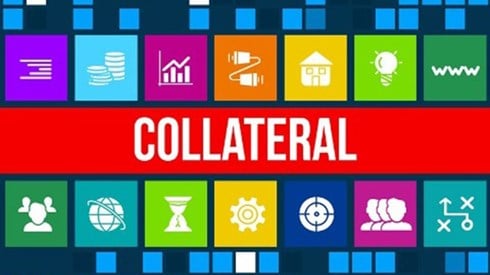Fronting: An Essential Element of Many Captive Insurance Programs

July 04, 2020

Fronting arrangements are a necessary element of many captive insurance programs, but—though the mechanism is fairly commonplace—there are distinctions among fronting insurers.
"There's a sort of misconception out there ... that the fronting market is basically a commodity," said Jesse Olsen, director at Strategic Risk Solutions (SRS). "I don't really find that to be the case."
Speaking during a recent SRS webinar titled "Understanding Fronting and Collateral Needs," Mr. Olsen said that, in reality, there are a number of characteristics that will distinguish one fronting insurer from another. "Collateral is one that gets a lot of people's attention," he said.
"We deal with everything from fronting [insurers] that are global multinationals all the way to relatively small [insurers] that might just have certificates of authority in a state or two," he said.
"It's necessary and good that there's a wide variety of fronting options out there," said another webinar panelist, Paul Carleton, senior vice president at Old Republic Risk Management.
Mr. Carleton said that while Old Republic will try to work with captive insurance companies presenting a variety of different fronting needs, some aren't a good fit for the insurer and might be better suited for another fronting insurer.
"We get a lot of inquiries, and we try to be creative," he said. "But there are definitely situations that come up where we're just not going to be able to meet the needs because either there's underwriting expertise required that we're not going to be able to bring to the table because it's not a line of coverage we deal with or there are regulatory implications because it deals with a segment of the market that we're not comfortable with.
"There are choices out there, and some perform better than others and meet different needs," Mr. Carleton said.
Mr. Carleton explained that, in essence, fronting arrangements involve an insurer with a high financial strength rating and/or admitted status writing direct coverage, though a substantial majority of the risk is actually assumed by another entity such as a captive.
He noted that captive insurance companies typically look to fronting arrangements to meet business needs or regulatory needs that require either admitted paper or insurance with a rating level the captive couldn't achieve on its own.
Other reasons for securing fronting insurance might include regulatory compliance, assistance with administration and accounting, or help with market perception that the insurance is written by a traditional insurance company, even if the captive behind the program is financially secure.
Workers compensation is one of the coverage lines that most commonly involves fronts for captives. Others include general liability, auto liability, product liability, professional liability, and owner/contractor-controlled insurance programs. Employee benefits programs, particularly medical stop-loss and various voluntary benefits, frequently involve fronts.
On the employee benefits side, "Medical stop-loss is a massive growth area, has been for several years running within the captive space," Mr. Olsen said. Programs writing employee benefits governed by the federal Employee Retirement Income Security Act (ERISA) of 1974 are less common, he said, because of the challenge of getting needed US Department of Labor approval to write those coverages in a captive.
Non-ERISA voluntary benefits, however, "is another space that's growing very rapidly," Mr. Olsen said, adding that SRS is seeing fronted captive programs writing everything from supplemental medical coverage to pet insurance.
"As a former regulator, we used to like fronting [insurers] because it was like an extra set of eyes looking at the program," said Derick White, managing director of corporate governance and regulation at SRS, who moderated the webinar.
Fronting arrangements often involve a reinsurance relationship between the fronting insurer and a captive insurance company, Mr. Olsen said, with the captive owner paying a premium to the fronting insurer, which then reinsures the coverage in question with the captive.
Some sort of collateral arrangement such as a trust or a letter of credit secures the transaction. "As you might imagine, getting reinsurance from a captive is not the same as getting reinsurance from an A-plus [insurer], and there are some implications to the fronting [insurer] from doing business with a captive," Mr. Olsen said.
"A front will require collateral not only to protect itself from credit risk but also for regulatory reasons," Mr. White said.
The fronting insurer's obligation to pay claims is the same as it would be under any other policy written on its paper, Mr. Carleton noted.
Under a fronting arrangement, if the fronting insurer has to pay claims, it will seek reimbursement from the captive or the captive owner, said Mr. Olsen. That relationship creates a credit risk for the fronting insurer.
"Generally speaking, the fronting [insurers] are not in the credit risk business," said Mr. Carleton. "In many cases, we're taking more credit risk than we are underwriting risk. So it's very important that we're properly secured."
"We're going to take a pretty conservative approach to collateral requirements," Mr. Carleton said, both in terms of the amount and the form of collateral. The keys are that the collateral has to be liquid and, particularly on the captive side, it's important to follow National Association of Insurance Commissioners guidelines, he said.
There can be differences of opinion between the fronting insurer and the captive and its parent about the appropriate level of collateral, he said.
"The fronting insurer is managing their credit risk and their balance sheet. We're going to be conservative there," Mr. Carleton said. "Whereas the insured, or the captive owner, is managing the expense item and ultimately the impact on their profitability. So they're going to want to get it right, but they'll probably be a little more aggressive because there's no point booking more expense than you're going to have."
Discussions between the two parties' actuaries can help close that gap, Mr. Carleton said.
Those sorts of discussions speak to one of the best practices in fronting arrangements, he said.
"The key here is to try to avoid surprises by talking about as many of the long-term issues up-front as you can and understanding the issues," he said. "You might not be able to lock down everything that you'd like to, but knowing what isn't locked down can be helpful."
Regular stewardship meetings between the parties are also essential, Mr. Carleton said. "Keep those lines of communication open," he said. "Relationships are important, and having that dialog is critical."
July 04, 2020

